Poola-Poola
New Haven (Google Maps location)
October 12, 2013
You know what? I’m not going to do what I always do on pages like this and spend two paragraphs weakly explaining why I consider a certain place a museum when it is clearly not a museum. This is a gym on the Yale campus in New Haven that I’m including in my list of museums because I feel like that is an appropriate decision. Deal with it.
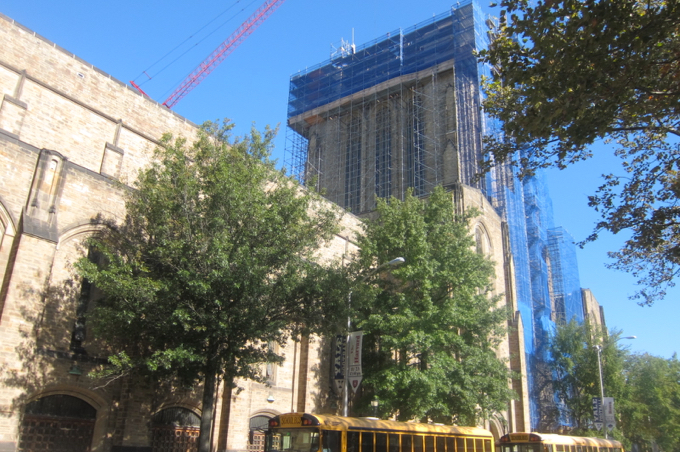
Now let’s move forward and learn about this massive architectural wonder with a bunch of my terrible pictures sprinkled throughout.
I visited the Payne Whitney Gym on a sparkling fall day – in fact, I joined a tour of the place. With a real tour guide and everything. Although we spent about 45 minutes exploring the place, I feel like I only saw half of it.
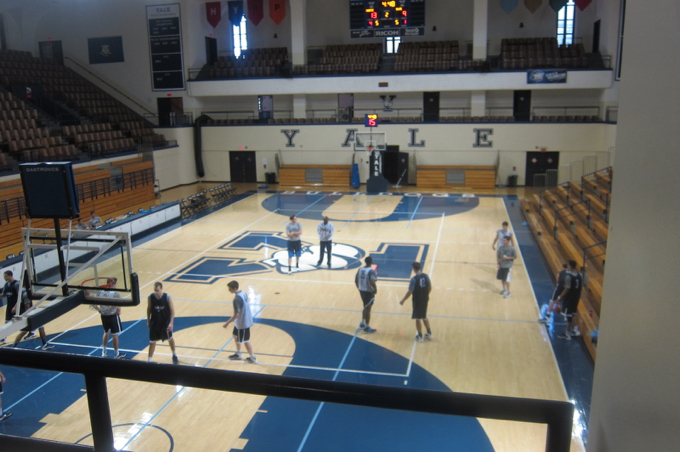
This is one of the largest athletic facilities ever built which in and of itself qualifies its inclusion on CTMQ. There are twelve acres of interior space! There’s a nine-story tower! The world’s largest suspended natatorium is here! There’s a goshdarn POLO PRACTICE ROOM! No, not water polo… actual horse polo. The building houses the facilities of many varsity teams at Yale, including basketball, fencing, gymnastics, squash, swimming, and volleyball.
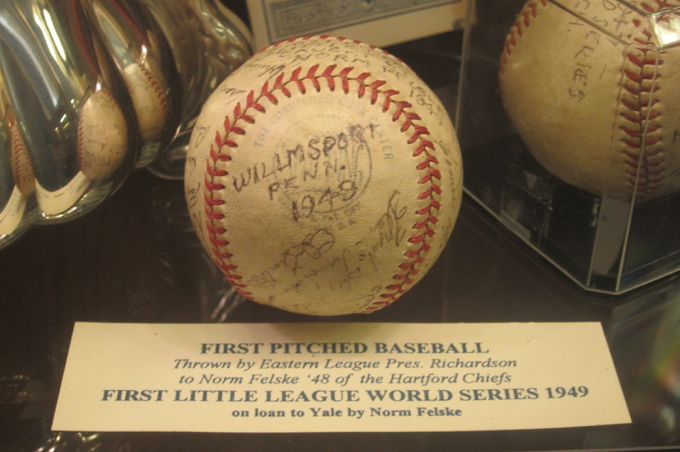
How big is it? It is the second-largest gym in the world by cubic feet. That’s pretty big.
The building was donated to Yale by John Hay Whitney, of the Yale class of 1926, in honor of his father, Payne Whitney. Because it was designed in the Gothic Revival style that prevailed at Yale between 1920 and 1945, it is commonly known as “the cathedral of sweat”. For the design of Payne Whitney Gymnasium, architect John Russell Pope was awarded the Silver Medal at the 1932 Olympic Games Art Competition.

It’s a beautiful building. The following is excerpted from a 1950 article in Harvard’s student paper. Even they were impressed:
From the outside, Yale’s Payne Whitney Gymnasium looks like a cathedral. On the first floor it resembles the great hall of a medieval castle, and on the second floor there is a trophy room that looks like the grand council chamber in a movie version of Hamlet. The only thing which gives Payne Whitney away as a place of athletics is the faint odor of perspiration which pervades the whole place.
Probably the best way to find out why Payne Whitney is the greatest gymnasium in the country is to take an elevator to the top of its neo-Gothic tower and then work down.
Of course, sports and focus have changed since 1950, but I think this is still a pretty cool insight into how the gym was during the Truman administration.
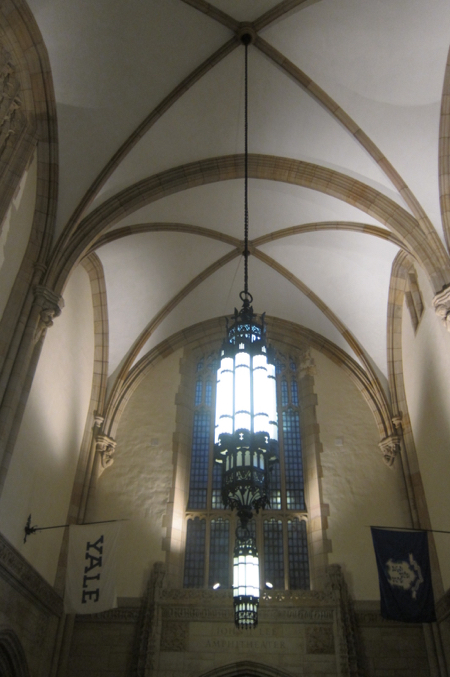
The tenth and highest floor is a solarium. It is set under a system of skylights and is bounded on four sides by the complicated masonry which inevitably goes with Gothic architecture.
Two consecutive floors below are devoted to boxing enthusiasts. The ninth level contains a punching bag room and by the eight floor, the tower has widened enough to allow space for five boxing rings. Pictures of greats of pugilism surround the rings, perhaps for aesthetic reasons, or perhaps for inspiration.

Broken necks are fun
The seventh floor is a court for fencers and the sixth floor is a wrestling room. None of these facilities is anything any big university gym does not have. Payne Whitney just has more of them.
A fifth floor, the last in the tower, harbors an exercise room with mats, ropes, Swedish boxes, and all sorts of other gymnastic equipment. It isn’t until the fourth floor that the gym widens out and shows what it’s got that other gyms don’t have. The fourth and third levels contain squash courts, three swimming pools, exercise rooms, steam rooms, and every conceivable gymnastic device that athletic directors at Yale have been able to think of.The gym even has a vault like door on every floor that opens up to chute for soiled towels. A lady visitor to the gym once said to her date, when she first spotted one of the towel disposal doors, “What is this, another secret society?”
Oh, those ladies.
This place cost about $5,000,000 to build, unequipped, in the 1930’s. That’s roughly $75,181,686.63 today. Yale is somethin’ else. How many gyms have bathroom doors that look like they’re at the Vatican?
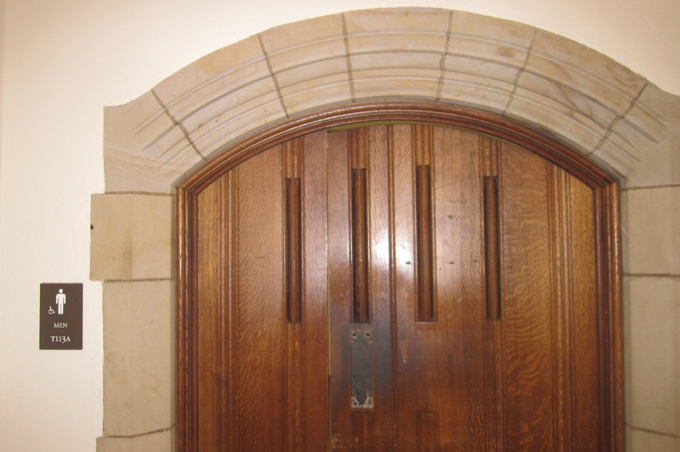
There’s lots of crazy here, so let’s do Crazy Payne Whitney features, ranked:
5. Polo Practice Area: I didn’t get a good look at this section, but it still exists. Who felt it made sense to practice polo in a 9-story building? In the middle of city?
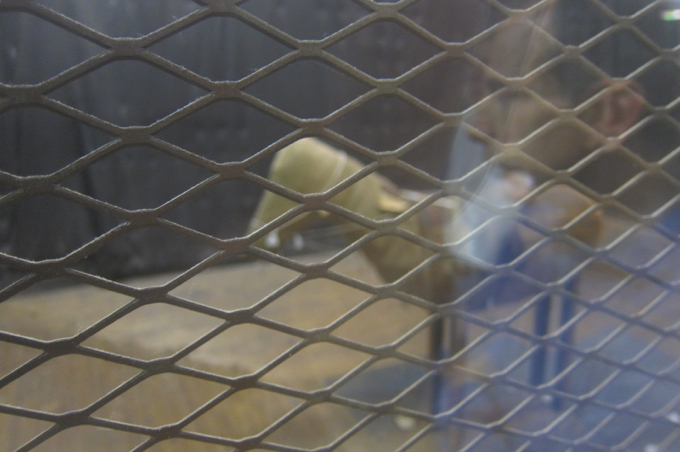
4. Stuffed Handsome Dan: Yes, the stuffed original Handsome Dan, the bulldog mascot of Yale and the first college mascot in the United States, resides in a glass cabinet near the entrance to the building. Here he is in all his glory:
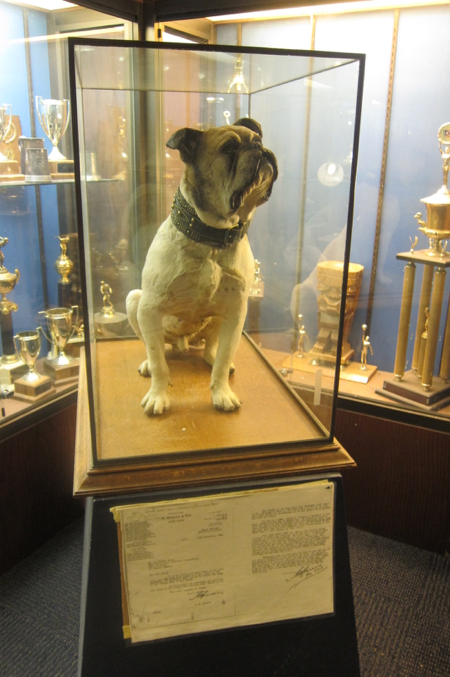
3. The Brady Squash Center: Lots of schools have squash courts and Yale and Trinity College in Hartford have two perennially great programs. It’s not the 15 International singles courts with glass back walls and viewing galleries. It’s not the three exhibition courts, or the two courts having three glass walls. No, it’s the unique four-glass-wall Brady Court which looks like it’s from an episode of Black Mirror to me.
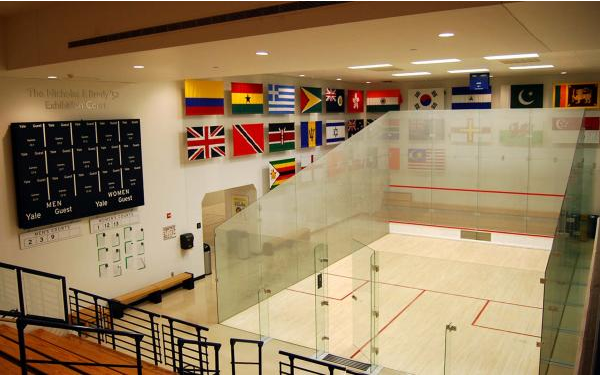
2. Robert J.H. Kiphuth Exhibition Pool: This “room” is bonkers. The pool is smaller than most collegiate competition pools are, but I hope they never change it. The fan seating is like nothing else I’ve ever seen or experienced.
The pool sits at the bottom of a 50-foot high funnel of 2,187 seats which rise at an angle of 45 degrees – 45 DEGREES! – and offer every spectator a perfect view of the action below. This is augmented by the fact that the 157-foot wide ceiling is held aloft without the aid of supporting columns — no easy engineering feat in the 1930’s.
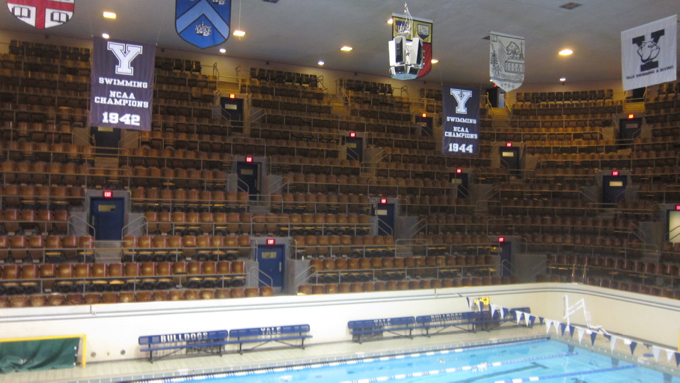
The architects designed the seating so it is entered by a series of tunnels, through which 35 people could be seated. That way, no more than three steps had to be climbed to reach any seat. Under the seats are air ducts which bring fresh air into the arena without lowering the temperature at poolside.
In the deep end of the pool is an underwater “coaching window,” installed after World War II, when Alistair Cooke came to Yale to film a television special on the history of swimming. Esther Williams, the famous swimmer, put on an exhibition for the cameras; the window was to show her, and some of the Yale swimmers who participated, while underwater.
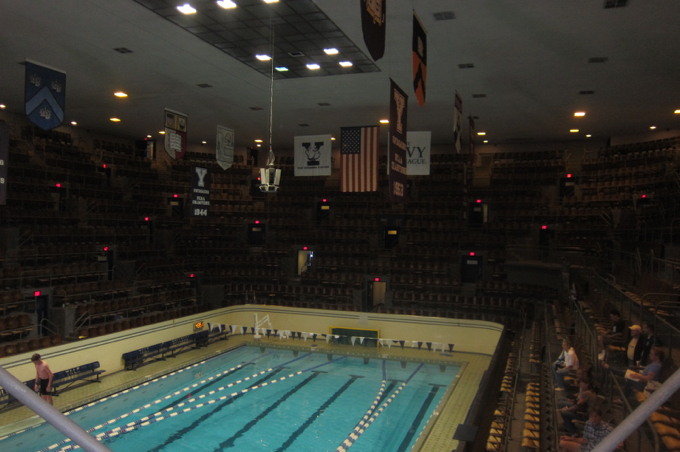
1. The Practice Pool: Yale’s other pool, the practice pool, is the world’s largest suspended natatorium. I know I already said that, but it’s really something. Enough to warrant its own CTMQ page, in fact.
It is located on the third floor of the gym and holds 330,000 gallons of water, weighing 2.75 million pounds. You can read much more about it in the link just above.
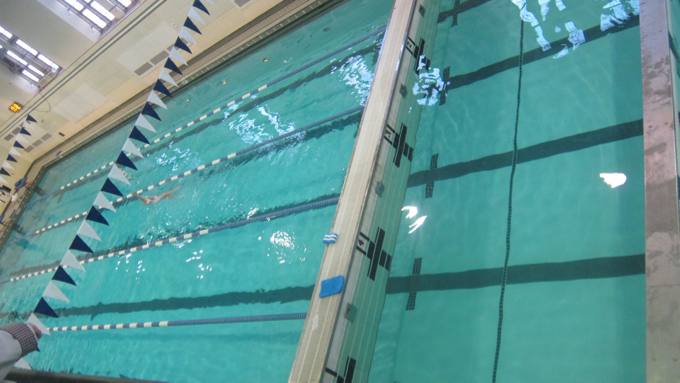
Other cool things here include the three crew tanks; just your everyday long pools for crew members to practice indoors in the winter. Let’s see… the US Squash Hall of Fame is somewhere within the building and I’ll go back to check that out someday. Although, it’s apparently one of three such halls of fame in the US which… why do we need three Squash Halls of Fame? I did happen upon some squashers and noted that squash players at Yale are smart:
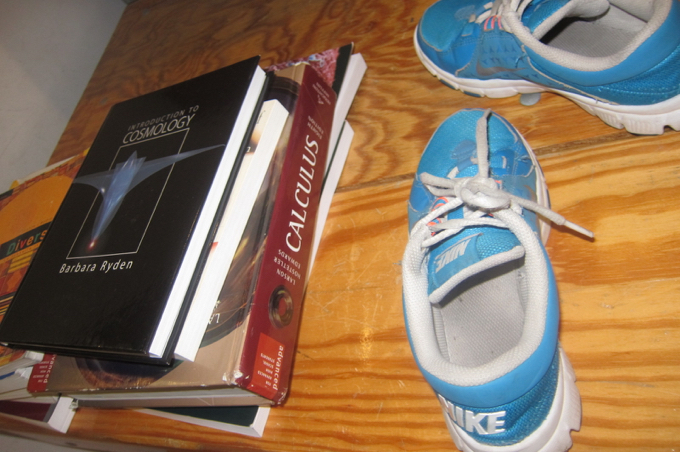
There’s a suspended indoor track, and a bunch of basketball and volleyball courts and weight rooms and fitness centers and videomotion studios and… well, everything and anything that anyone would want in a massive 12-acre, 9-story gym at one of the premier institutions of higher learning in the world.
Except because this is at Yale, there’s a lot of history throughout. A picture of George W. Bush playing football. Some game balls from Harvard-Yale sporting events from a hundred years ago. Olympic medals from Yale alumni who love Yale so much they donated their gold medals. Just lots of great stuff here – museum quality stuff.
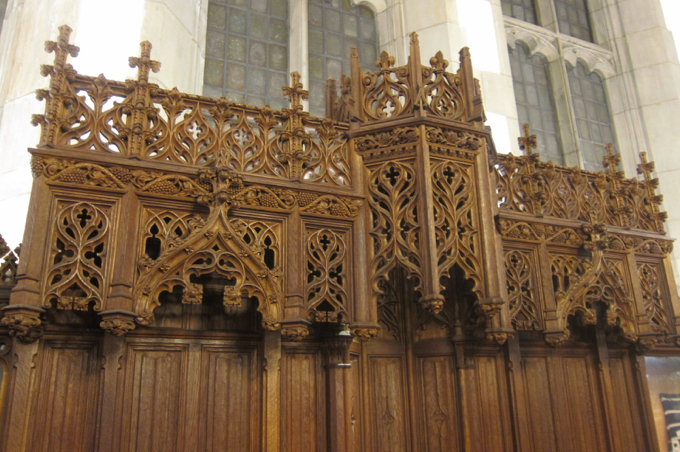
One thing missing are the boxes and boxes of nude photos.
Say what? You mean you don’t know about the Great Ivy League Nude Posture Photo Scandal from the 1940’s to the 60’s? It’s one of the weirdest and creepiest stories you’ll ever read. Here’s the first paragraph from The New York Times Magazine in 1995:
One afternoon in the late 1970’s, deep in the labyrinthine interior of a massive Gothic tower in New Haven, an unsuspecting employee of Yale University opened a long-locked room in the Payne Whitney Gymnasium and stumbled upon something shocking and disturbing.
Shocking, because what he found was an enormous cache of nude photographs, thousands and thousands of photographs of young men in front, side and rear poses. Disturbing, because on closer inspection the photos looked like the record of a bizarre body-piercing ritual: sticking out from the spine of each and every body was a row of sharp metal pins.
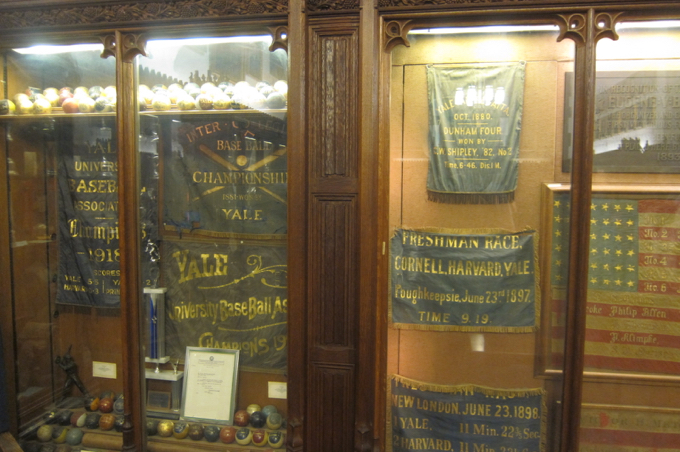
The employee who found them was mystified. The athletic director at the time, Frank Ryan, a former Cleveland Browns quarterback new to Yale, was mystified. But after making some discreet inquiries, he found out what they were — and took swift action to burn them. He called in a professional, a document-disposal expert, who initiated a two-step torching procedure. First, every single one of the many thousands of photographs was fed into a shredder, and then each of the shreds was fed to the flames, thereby insuring that not a single intact or recognizable image of the nude Yale students — some of whom had gone on to assume positions of importance in government and society — would survive.
The whole story is crazy. It’s a long piece, but… fascinating. Also fascinating? Before coeducation at Yale, the third floor pool was strictly “no suits,” i.e. nude.
How’s that for a secret society, ladies?

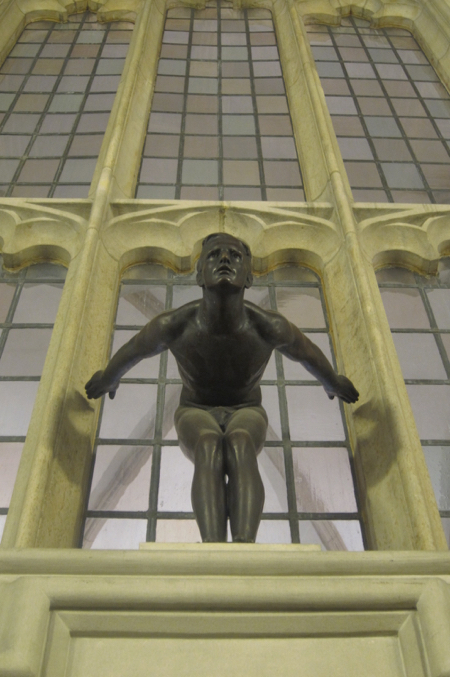
 Kevin ODonnell says
Kevin ODonnell says
September 30, 2019 at 12:19 pmI swam in the practice pool for the police academy water safety class in 1997. It was deeper than I thought it would be, especially when I had to swim down to the bottom and get the 10 pound child dummy back to the surface. The room has an historical vibe the minute you walk in.